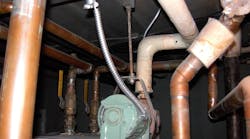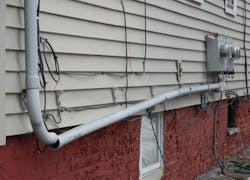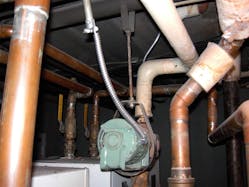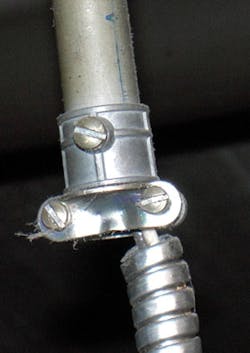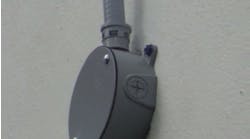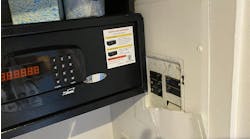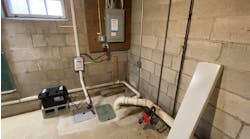Damaging Effects of the Sun
According to Sec. 300.6(C), nonmetallic equipment such as raceways, boxes, couplings, supports, and support hardware must be made of a material that is suitable for the environment in which it is installed. Where exposed to the damaging rays of the sun, Sec. 300.6(C)(1) requires nonmetallic equipment to be identified or to be listed as sunlight-resistant.
As this picture shows, five of the six “not-so-sunlight-resistant” clips for the PVC service raceway have failed because they were installed in a sunny location and eventually became brittle and cracked, causing the entire raceway to sag and break apart. This installation is now in serious peril of having a catastrophic failure. The horizontal run of pipe would have also benefitted from the use of an expansion fitting as required by Sec. 352.44, since it is very likely that this length of pipe would have experienced a change in length of at least ¼ in. or more due to thermal expansion and contraction. This type of PVC clip may have instructions that say “for indoor use only.” If so, it would also violate Sec. 110.3(B), as the clips would not have been installed in accordance with the instructions included in the listing or labeling.
Installer Must Have a Screw Loose
If you look closely at the photos, you may notice that there is no equipment ground wire installed, and the FMC has completely separated from the EMT changeover fitting — essentially leaving this motor without an EGC. Section 348.60 similarly requires an EGC to be installed where flexibility is needed in the FMC to reduce transmission of vibrations or to allow movement of the equipment.
Motors like this will have some slight twisting movement when they start and stop, which could cause strain on the FMC connectors and loosen the screws.
